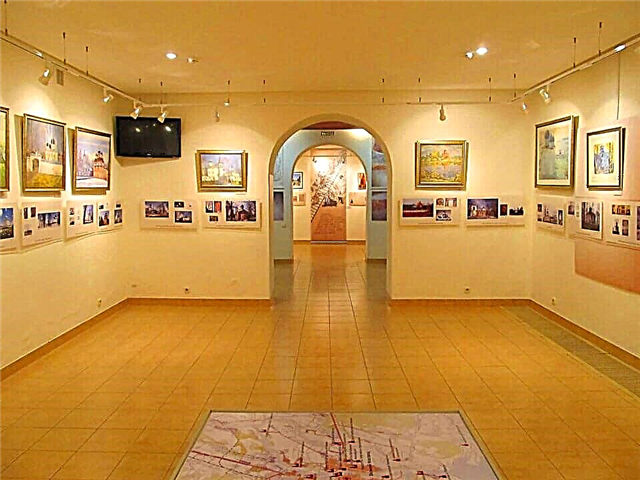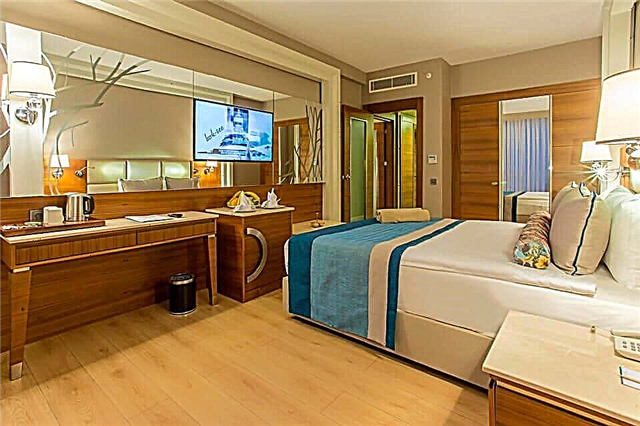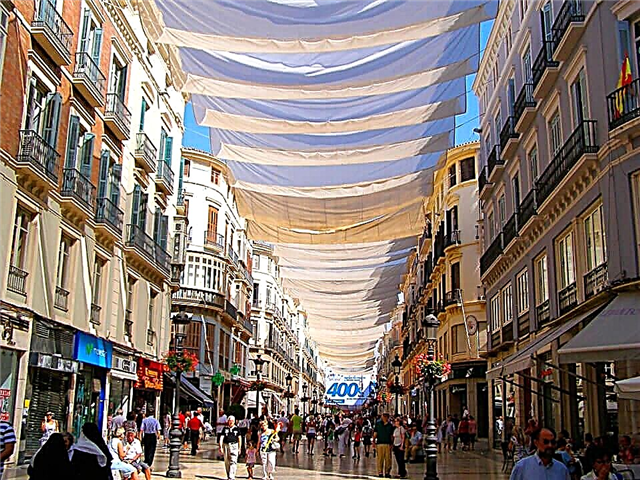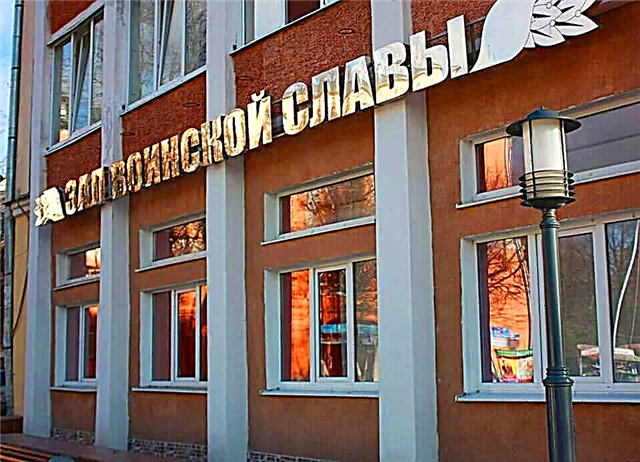It is no coincidence that the most ancient Russian city located along the banks of the Volkhov River was named the Great. From the very foundation (859) until the 17th century, it was a significant outpost on the northwestern border. In the Middle Ages, the city became the capital of the Novgorod Veche Republic, a major center of the cultural, economic and spiritual life of Russia. Many religious and architectural monuments, ancient monasteries remained in Veliky Novgorod from this era. The museums of Veliky Novgorod are becoming more and more popular with Russians and foreign tourists.
Novgorod Kremlin

It is difficult to resist admiration for someone who sees for the first time the greatest architectural and religious complex of the city - the Novgorod Kremlin. A feeling of gratitude arises to those whose efforts have managed to keep it in excellent condition. The scale of the building cannot but amaze: the height of the enclosing walls is from 8 to 15 m, the thickness in some places is 6.5 m.From a small oak fortress, erected under Vladimir Yaroslavovich (the son of Yaroslav the Wise) in the 11th century, the Kremlin became stone in 15 century.
The main object of tourists' attention here is St. Sophia Cathedral, built on the model of the Constantinople temple. This magnificent cross-domed structure is a 5-nave snow-white temple with helmet-shaped domes. After many years of oblivion and devastation, today it looks like a true architectural gem of the Middle Ages and acts like a cathedral. Other ancient temples of the Kremlin are no less interesting. A small building with a small bell tower and a cross-shaped dome - the Church of Andrei Stratilat contains unique murals of the 16-17 centuries.
In fact, this is a side-chapel left over from the large Borisoglebsk cathedral. You cannot pass by the church of St. Sergius of Radonezh (15th century), which attracts attention with its high clock tower. Because of the slight tilt, the tower is called "Leaning". The Church of the Entry of the Lord into Jerusalem, visited by many, which now houses a lecture hall. The Faceted (Vladychna) Chamber is the only example of Gothic civil architecture - a museum and exhibition complex. Temporary exhibitions are organized in the building of the former barracks. Near the St. Sophia Cathedral there is a monumental monument to the "1000th anniversary of Russia" - the focus of sculptural images of the great personalities of Russia.
Museum of Antiquities

It is not surprising that in the ancient Russian city there is a collection of exhibits confirming the solid age of Veliky Novgorod. All of them are located in one of the oldest city institutions - the Museum of Antiquities, founded in May 1865. It was organized on the initiative of N. G. Bogoslovsky, with an employee of the provincial statistical committee. The first public exhibition was held in the private apartment of Bogoslovsky. In 1867, museum rarities visited an ethnographic exhibition in Moscow, making a strong impression on visitors. For some time (1878-92), the institution ceased its activities. The most valuable religious artifacts were donated to the St. Petersburg Theological Academy.
The new life of the Museum of Antiquities began in January 1893 in a newly rebuilt building, when the ceremonial consecration of the artifacts took place. Then they organized a storehouse at the diocese, where ancient monuments and objects of art were delivered. An exhibition of paintings from Ancient Rus was opened in the building of the bishop's house. In 1922, following the work of the commission for the confiscation of church property, the museum collection was enriched with 400 exhibits. The exhibitions feature silver jewelry, coins, household items and much more. The collection of archival photographs, newsreels acquaints with the history of the development of an institution important for the country.
The Lord's Chamber

The center of general attraction for visitors in the Novgorod Kremlin - Vladychnaya (Faceted Chamber) This is the former residence of the Novgorod bishops, where the meetings of representatives of the highest authorities were held. The building, built in the middle of the 15th century, was restored twice in order to preserve its original appearance. Today the complex (2 buildings) presents various exhibitions. The exhibitions "The Golden Storeroom" and "The Chamber of Archbishop Euthymius" are housed in the Faceted Chamber.
The "Golden Storeroom" is an exhibition of pieces of jewelry from the 16th-18th centuries, impressive with the variety and skill of the craftsmanship. In the "Chamber of Bishop Euthymius" the situation of the life of bishops, their vestments, household items, etc. are demonstrated. The main exposition of the complex occupies a 2-storey building, built in the 18th century. as an administrative center. In 1865, a museum was opened in it in honor of the 1000th anniversary of Russia. A commemorative plaque dedicated to the founder of the institution, Nikolai Bogoslovsky, was attached at the entrance to it. His merit is the preservation of priceless rarities - unique birch bark letters that give a complete picture of the life of the ancient Novgorodians. There are many interesting archaeological finds, objects of decorative and applied art, including icons. There is an exposition reflecting the events of the Second World War.
Novgorod Museum-Reserve

The oldest association of museum institutions in Russia is a large-scale complex of museums, architectural monuments, unique collections of various trends. The Novgorod Museum-Reserve began to form even before the revolution, in 1865. Now, geographically, it occupies the city of Veliky Novgorod, the entire Novgorod region and unites all the museums of this space.
There are almost 170 buildings and other structures under the auspices of the reserve. The funds include more than 400 thousand movable objects, more than 300 thousand scientific exhibits. Branches are located in other cities: Vitoslavitsy, Staraya Russa, Valdai, Chudovo, Borovichi. Immediately after the establishment of Soviet power, when the nationalization of church property took place, a huge collection of exhibits was gathered. Their number was replenished every year due to archaeological excavations and liquidated private institutions.
January 1976 is the official date of foundation. Today, all the monuments of the reserve are included in the UNESCO World Heritage List (1992). 17 departments of the institution are engaged in large-scale cultural, educational, scientific and archaeological, restoration and educational work. The reserve has a great variety of various collections: manuscripts, printed books, weapons, decorative and applied arts. Its funds contain masterpieces of Old Russian painting, icon painting, wooden carving, etc.
Yaroslav's Court

According to the assumptions of historians, in the place where the palace of Yaroslav the Wise stood, there is the Yaroslav's Court, mentioned in the chronicles of the 12th century. like "Prince's yard". In the 16th century, during the reign of Ivan IV, it began to be called Gostiny Dvor. It is impossible not to admire this beautiful place, fenced off from the river by an elegant arcade. She, like the Vorotnaya Tower, remained from the Gostiny Dvor, built in the Petrine era.
The Nikolsky Cathedral, churches of the Myrrh-Bearing Wives, Procopius, Paraskeva Pyatnitsa, Assumption, George, John on Opoki are located on a compact territory. Each of these religious monuments is a kind of architectural masterpiece. The memorable Hanseatic sign is also noteworthy here - a stylized image of 2 ancient sailing ships: a Novgorod boat and a Hanseatic cog.
The bronze sails are formed by the woven crowns of symbolic trees. The original composition was installed at the time of the international celebration of the Hanseatic days in 2009. Another object dedicated to this event is the Hanseatic Fountain. Its bowl is made in the form of a granite circle, embodying the idea of a negotiation table. The exhibition “Christian Antiquities.Artistic metal of the 11-19th century ”, where there is something to see.
Vitoslavlitsy
Near the Yuryev Monastery, not far from Veliky Novgorod, there is an architectural reserve of Russian wooden architecture. It was named Vitoslavlitsy by analogy with the village that has been in this place since the 12th century. It was surrounded by many small monasteries. The village and monasteries disappeared into oblivion, only the Annunciation remained from the monasteries. A charming natural landscape with lakes and channels, mixed forest in 1960 was chosen to create an open-air museum.
It was decided to place old wooden churches in it. They were delivered from different villages and cities of the Novgorod region. Today, 22 wooden objects are located on the territory of the reserve. Here is the tent-roofed Church of the Assumption (16th century), built on the principle of "octagon on a quadruple". She was brought from Kuritsk. From the village of Peredki, they brought the Church of the Nativity of the Theotokos, erected in 1531 according to the type of the cross on the basement with 3 thrones of the churches.
The 3-tiered church of St. Nicholas (1767) from the High Island is impressive. Other religious structures of wooden architecture are also interesting. Every visitor feels gratitude to the creators of the reserved place for the fact that they managed to preserve the fruits of the virtuoso skill of Novgorod woodcarvers.
Troitsky excavation site

Tourists visiting Veliky Novgorod have a unique opportunity to find themselves in its distant past. Such an opportunity is provided to them by the Troitsky excavation site, where the famous birch bark letters were found. Archaeological work has been carried out on Troitskaya Street, near Detinets, since the 70s of the 20th century. During this time, researchers managed to get to the bottom of the cultural layer of the 10th century.
As a result of the excavations, many ruins of houses and estates were discovered, among which there is an art workshop of the pre-Mongol period. A valuable find was the Novgorod Psalter - the oldest book of Russia, written on wax tablets in the 11th century. Today, the excavation front has turned into a tourist site, where the "Theater of Time" exposition is open.
Participants of an organized tour of the Novgorod Museum-Reserve can visit it. Going down 6 meters, tourists find themselves in the ancient city. They see the remains of city estates, houses, outbuildings, etc. In the anniversary year of 2009, when the city turned 1150 in August, an archaeological art mob was held at the Troitsky excavation site. Hundreds of Novgorodians lined up along the perimeter of the excavation: scientists, students, city residents, tourists.
Art Museum

A lot of impressions await admirers of the talents of Russian painters in the historic building of the Noble Assembly. It was built by the famous architect Stackenschneider in 1851 for holding parliamentary meetings, concerts, evenings, balls. The facade of the 2-storey building was decorated with gables-kokoshniks with stucco coats of arms of the cities of the Novgorod province. In the 50s of the last century, they were removed and the 3rd floor was added, a portico was added, resting on 8 massive columns.
For several decades, Soviet organizations and educational institutions were based here. The Museum of Fine Arts was opened in the Noble Assembly in 2001. The expositions are based on painting collections confiscated from former noble estates. They were supplemented by the collections of the State Russian Museum and the Russian Museum Fund.
Visitors can see here all the variety of genres of Russian painting, graphics, sculpture, portrait miniatures of the 18-20th centuries. At the entrance, everyone is greeted by Villevalde's grandiose painting "The Opening of the Monument to the 1000th Anniversary of Russia in Novgorod in 1862" The expositions fascinate with paintings by Rokotov, Levitsky, Bryullov, Borovikovsky, Aivazovsky, Tropinin, Repin and others. The expressive sculptures of Shubin, Antokolsky, Trubetskoy, Vrubel are admired.
Hall of Military Glory

The rich history of military exploits of Novgorodians is embodied in the Hall of Military Glory, opened in 2012. It is located in a symbolic place of the city - near the protective medieval rampart, next to the memorial Stele. Its exposition reflects the feats of arms of the inhabitants of Veliky Novgorod for 1000 years. A team of professionals: historians, artists, cultural workers worked on the creation and collection of exhibits. Thanks to their efforts, the fund of the Hall was enriched with 80 rarities: photos, awards, paintings, uniforms, weapons, etc. were donated by residents.
One of the exhibitions tells about 16 of the most striking episodes of military glory. They are depicted in 16 bas-reliefs on 4 mini-obelisks surrounding the Stele. Examining the exposition, one can draw a conclusion about the invaluable contribution of Novgorodians to the protection of their native land, learn the names of prominent military men. The exhibition of wax figures of warriors of 4 eras (13, 17, 19, 20 centuries) is of great interest. Figures of the Novgorod warrior, the Sagittarius, the chief officer of the cuirassier regiment, the Commander of the Red Army were masterfully made by the famous artist-sculptor Mikhail Nesterov. The exhibits of the "Hall of Military Glory" are constantly replenished.
Likhudov corps

The old building attracts the attention of the monastery type with windows and a carved wooden porch. It is it that gives the building a fabulous look, evoking thoughts of distant antiquity. The building, called the Likhud building, was erected in 1670 on the old foundations of the 15th century. At that time, a complex of buildings for various purposes was based on it, which in historical documents was called the "Archbishop's Palace". Although, according to the same documents, the archbishops never lived in it. It housed military personnel, warehouses with food and gunpowder. The newly built building was named after the name of 2 Greek monks-scientists - brothers Ioanniky and Sophronius. They founded in 1706 the Greco-Slavic School - the vanguard school for that era.
There were 2 classes in it: Slavic and Greco-Slavic. In the Slavic class, children learned reading, writing, grammar, rhetoric, and studied poetics. In the Greco-Slavic class, Greek language, reading and writing were additionally studied. Later, in 1740, the institution was reorganized into a theological seminary and transferred to a new building. Likhudov building was occupied by a hospital, a library and an archive.
Children's Museum Center

Educational and educational institution for children. Here they get acquainted with folk art, get acquainted with the art of Novgorod masters, with the history and culture of their native land. The center regularly hosts exhibitions of children's works, works of famous artists of the Novgorod region. and cities. Excursions to thematic expositions are organized weekly.
On weekends, the “Weekend Club” meets, where schoolchildren and their parents participate in craft master classes. They are supervised by professional master teachers who pass on their experience and skills. Classes are held in a specially equipped training room "People's Culture". The permanent exhibitions "City of the Boy Onfim" and "Historical Sources" are now being improved with the involvement of interactive means.

The center's program includes the development of genres of children's folklore, the participation of children in folk holidays and festivals. Near the center is "Onfimkina Polyana", where Grandfather Treskun lives - a mythological winter spirit - a hero of ancient folklore. From him, children learn a lot of interesting things about folk signs of winter, learn from him the wisdom of peasant labor. Get acquainted with the legends and traditions associated with Treskun.
State Museum of Fine Arts

The opportunity to get acquainted with the works of artists of the Novgorod land is provided by a specialized institution opened in the city in 2002. This is the GMHI, the foundation of which was laid by the regional center of artistic creativity. On the day of its opening (April 8, 1994) 20 venerable Novgorod artists donated their paintings to the center, and this has become an annual tradition.For 8 years (1994-2002), a collection of 2 thousand works was thus formed, and the center was declared the State Museum of Fine Arts.
It is located on the territory of the Tithe nunnery (city center) on the Sofia side and occupies 2 buildings. The main office of the institution is located on the 1st floor of the northern building of the monastery (1814-20). Today it hosts thematic exhibitions dedicated to the work of one or another artist. It displays works not only by professional painters of Novgorod and the region, but also by young artists (for example, Liya Raitseva and others).
Exhibitions dedicated to the natural beauty of Karelia and the memory of Alexander Nevsky are interesting. In the same building there is a repository of exhibits and service premises. A modern exposition "Blue cobalt" with a collection of Novgorod (blue) porcelain has been opened in building No. 6 of the Tithe Monastery.
Iron Museum

One cannot remain indifferent when visiting the exposition dedicated to the necessary household item - the iron. It was opened in Vitoslavlitsy, becoming part of the Museum of Folk Wooden Architecture. The exposition demonstrates all types of irons presented in evolutionary development. More than 200 exhibits reflect the technical progress in the production of irons produced in different countries of the world. There is a primitive ironing tool here - a Russian ruble - a wooden plank with carved notches.
They softened and smoothed linen fabrics well. Various examples of charcoal irons that appeared in the Middle Ages and served almost until the middle of the 20th century are presented. These cast iron products sometimes weighed 15 kg and were unsafe, since hot coals were laid inside. There are also more advanced models of charcoal irons, similar to a mini-stove.
An interesting sample of the 18th century. with a replaceable liner, which was heated over a fire and put into a hollow body. You can see an alcohol iron, to the body of which a metal flask was attached, into which alcohol was poured. Presented is a gas appliance heated by gas combustion. There is also a water apparatus, into the sole of which water was poured, and ultra-modern electric specimens.
Cinema Museum of Valery Rubtsov

A film museum was opened near Yaroslav's Dvorishche in the "House of the bourgeois woman PL Butuzova", an architectural and cultural monument of the 19th century. It was organized by Valery Rubtsov from Novgorod, who collected a large collection of unique film exhibits. Various rarities of the film industry of the 1st half of the 20th century. occupy the 1st floor of the building. Visitors are given the opportunity to see all samples of Soviet film technology from the 20s and 40s. There are exhibits related to the global film industry: cameras, projectors, magic lanterns, editing tables.
Expositions on the second floor showcase many different accessories, cinema accessories, newspapers, books, and magazines on cinema topics. Many photos of Soviet, Russian and foreign artists; movie posters, tickets. It contains films of rare old films, documentary newsreels from the history of Novgorod. Valuable rarities - Yuri Gagarin's movie camera. Admirers of the talent of Alexander Abdulov and Irina Alferova will get acquainted with their personal film archive. Recently, a new mini-exhibition "Projection booth" has opened in the institution.
Workshop-museum of Alexander Varentsov

It is difficult to overestimate the contribution to the development of the artistic culture of the Novgorod region. Honored Artist of Russia A. Varentsov, who organized a creative workshop. His wife and student Svetlana Akifieva, an art critic, helped him a lot in creating the complex. A gallery of paintings by the master occupies a place of honor here. It was opened as part of a retrospective exhibition dedicated to the 65th anniversary of the remarkable artist.
It presents the entire creative range of the master: still lifes, portraits of the 70s, realistic and impressionistic landscapes, watercolor sketches, decorative paintings. In the Small Hall, book illustrations and watercolor drawings by Svetlana Akifyeva are exhibited. The exhibition includes polygraphic works based on Varentsov's paintings. Meetings of artists, exchange of experience, master classes are held in the graphics class. Beginning artists make their first strokes here under the guidance of experienced craftsmen. Lovers of painting can purchase a sketch they like in the workshop.











